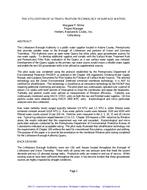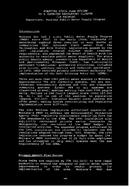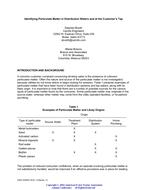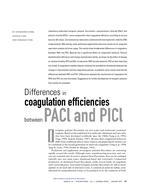Provide PDF Format
AWWA MTC53653
- The Utilization of Ultrafiltration Technology in Surface Waters
- Conference Proceeding by American Water Works Association, 05/01/2001
- Publisher: AWWA
$12.00$24.00
The Littlestown Borough Authority is a public water supplier located in AdamsCounty, Pennsylvania that provides potable water to the Borough of Littlestownand portions of Union and Germany Townships. The Authority owns an open waterquarry but relies solely upon groundwater sources for raw water supply. Todevelop additional supplies and comply with the Surface Water Treatment Rule andPennsylvania Filter Rule, evaluation of the quarry as a raw surface water supplywas initiated. Development of the quarry supply as the primary raw water sourcewould insure a reliable water supply and enable the ten groundwater wells to beutilized as supplemental sources. The pilot study was completed using theprotocol established by the Pennsylvania Department of Environmental Protection(PADEP) as outlined in the Chapter 109 regulations, Drinking Water Supply Manual,and Guidance Documents for Pilot Studies for Filtration of Surface Water Sources.The selected technology was the Zenon Environmental ZeeWeed immersed membranetechnology; it is NSF 61 certified for ultrafiltration. This technology isclassified as an innovative technology by the PADEP thus requiring additionalmonitoring and analyses. The pilot plant was continuously operated over a periodof eleven (11) weeks with brief periods of interruption to clean the membranesand repipe the headworks. Turbidity and particle counts were utilized asmeasurements of filtration efficiency. Turbidity was continuously monitored usingHACH 1720 C units on both the raw and finished water supplies. On line particlecounts were obtained using HACH 1900 WPC units. Bacteriological and microparticulate analyses were also conducted. Raw water turbidity levels rangedtypically between 0.9 NTU and 1.5 NTUs, while filtered water remained constantaround 0.024 NTUs. Raw water particle counts were between 3500 and 4500 withfiltered water counts around 10 per 200 ml. Particles were measured in the 2, 5,10, 15 and 20 micron size. Typical log reduction ranged between 2.5 to 3.5.Chapter 109 requires a 99% reduction by filtration alone; the results indicatedthat this requirement was met and exceeded. Bacteriological and micro particulateanalyses conducted by the Pennsylvania Department of Environmental ProtectionBureau of Laboratories indicated an acceptable rating. The pilot studyillustrated that ultrafiltration technology met the requirements of Chapter 109without the need for conventional flocculation, coagulation and settling. Thepurpose of this paper is to provide documentation on the membrane filtrationpilot testing completed for the Littlestown Borough Authority Quarry. Includes figures.
Related Products
AWWA JTMGT64453
Making Process Improvement Stick: A Case Study from the Metropolitan Sewer District of Greater Cinci..
$12.00 $24.00
AWWA ACE59858
Identifying Particulate Matter in Distribution Water and at the Customer's Tap..
$12.00 $24.00
AWWA JAW57435
Journal AWWA - Differences in Coagulation Efficiencies Between PACl and PICl..
$15.00 $30.00





